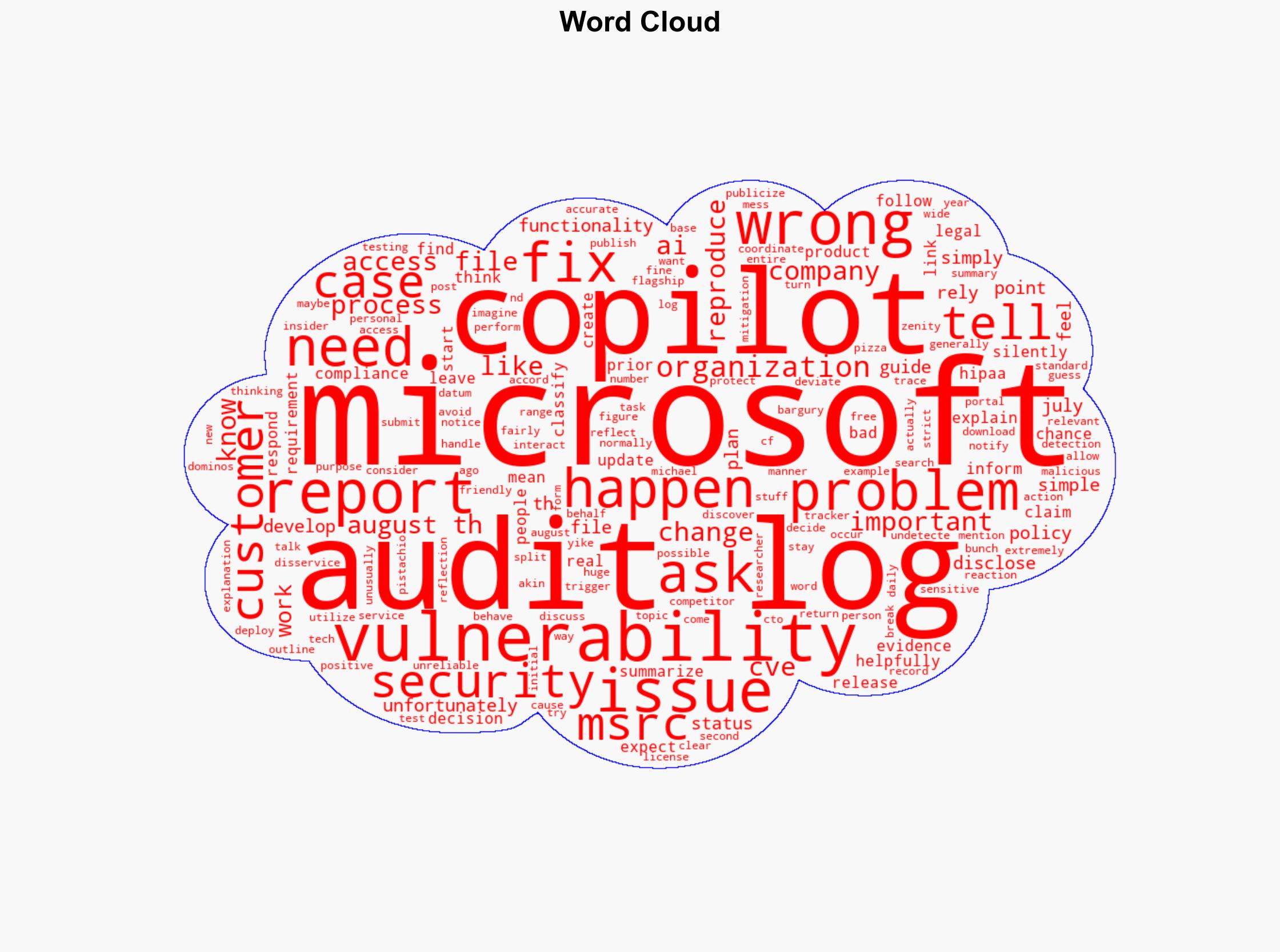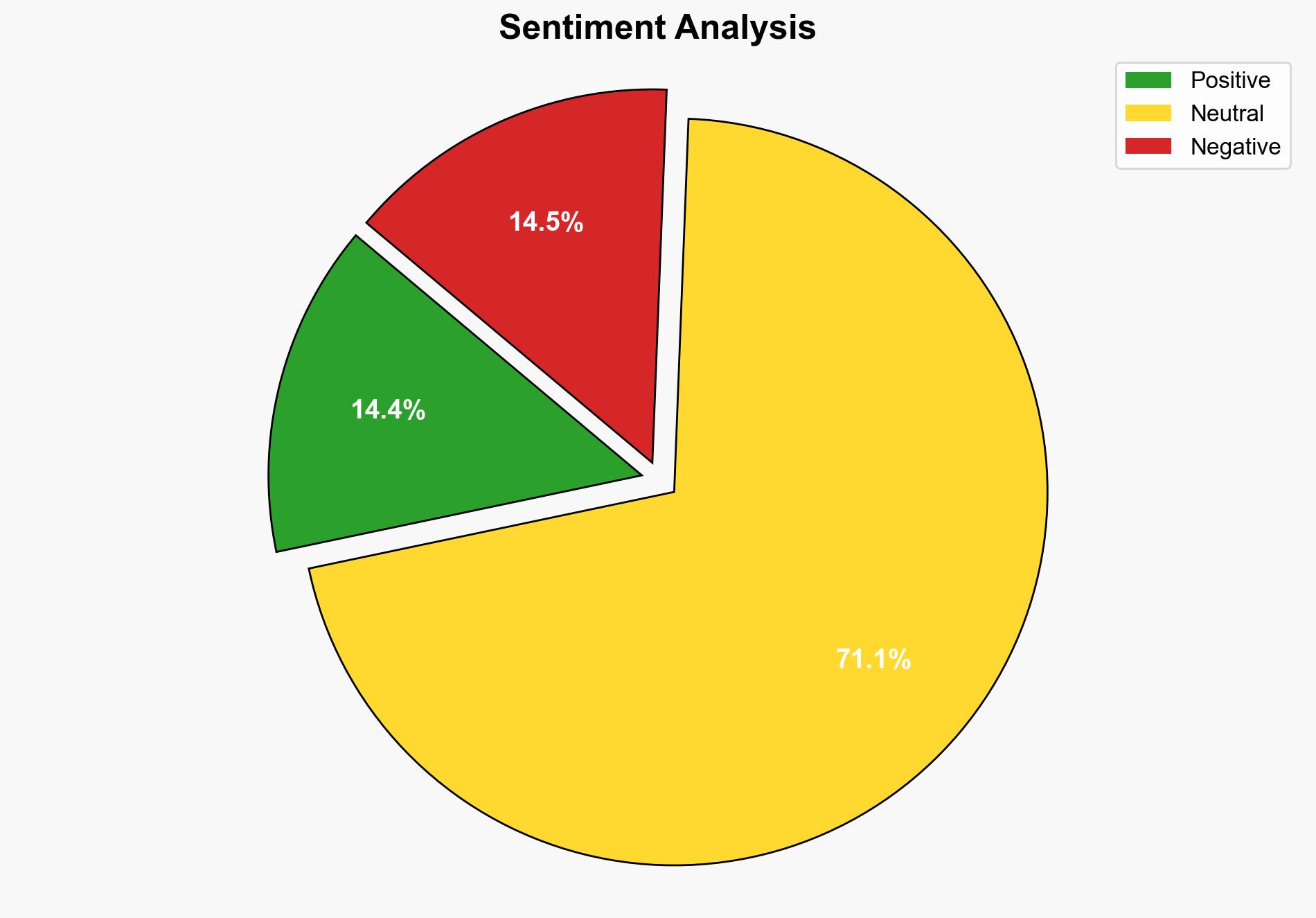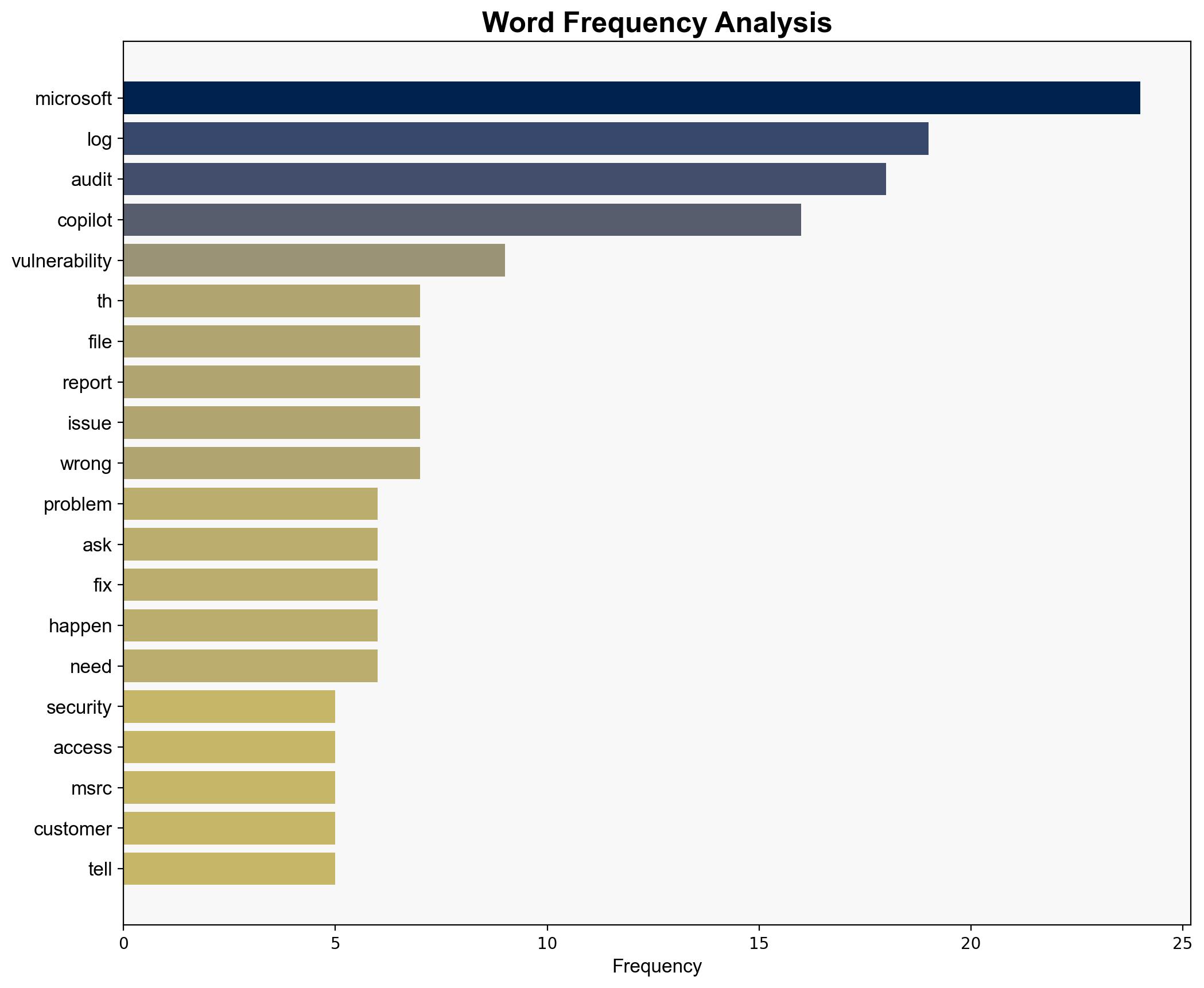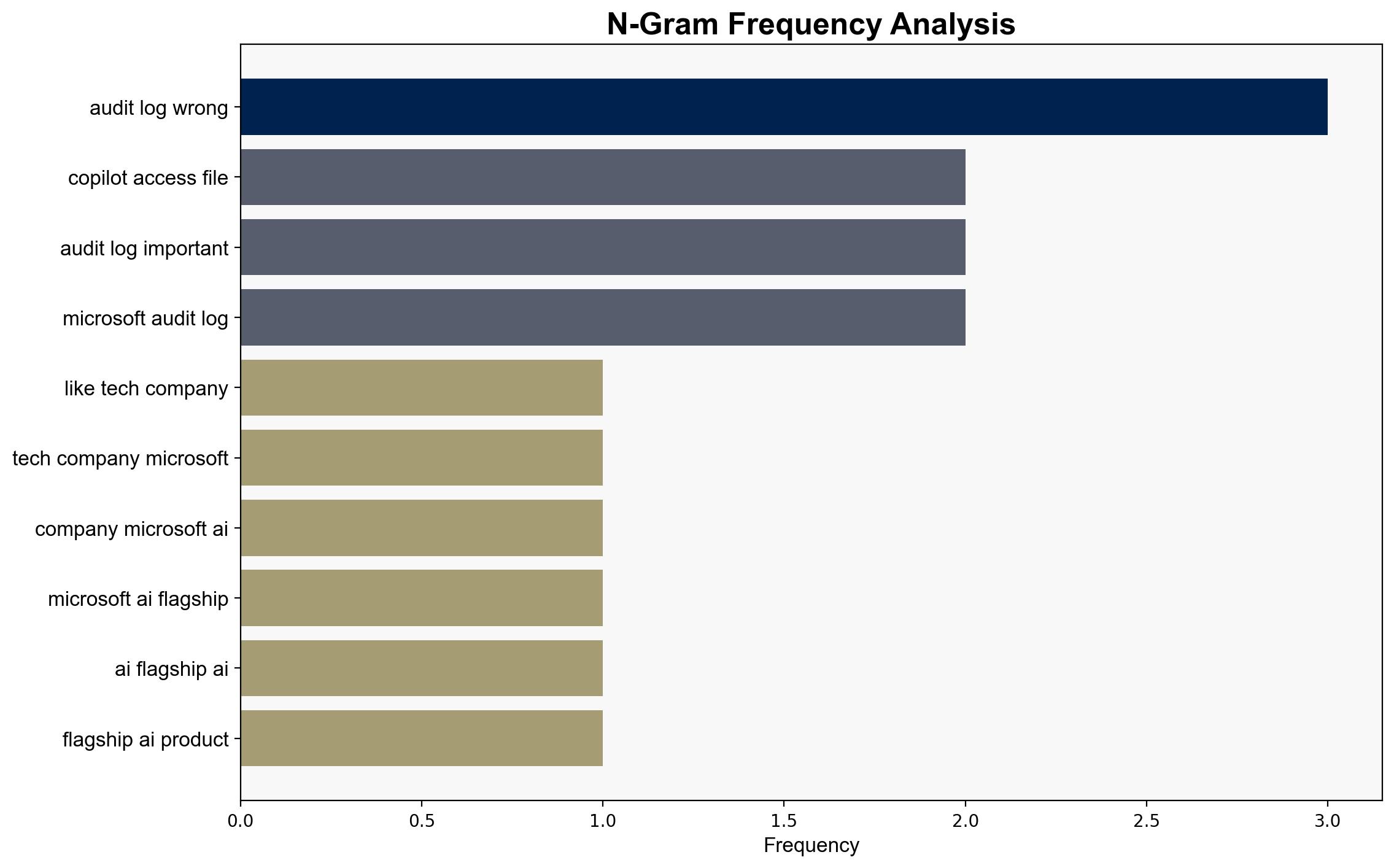Copilot Broke Your Audit Log but Microsoft Won’t Tell You – Pistachioapp.com
Published on: 2025-08-20
Intelligence Report: Copilot Broke Your Audit Log but Microsoft Won’t Tell You – Pistachioapp.com
1. BLUF (Bottom Line Up Front)
The strategic judgment is that Microsoft’s handling of the Copilot audit log vulnerability reflects a significant oversight in cybersecurity transparency, potentially undermining trust and compliance. The most supported hypothesis suggests a deliberate decision to minimize public disclosure to protect corporate reputation. Confidence level: Moderate. Recommended action: Encourage Microsoft to adopt more transparent vulnerability disclosure practices to maintain customer trust and compliance integrity.
2. Competing Hypotheses
1. **Hypothesis A**: Microsoft deliberately chose not to disclose the audit log vulnerability publicly to protect its corporate reputation and avoid potential legal repercussions.
2. **Hypothesis B**: The lack of disclosure was due to internal miscommunication and procedural inefficiencies within Microsoft’s vulnerability management process.
Using the Analysis of Competing Hypotheses (ACH) 2.0, Hypothesis A is better supported. The structured comparison indicates that Microsoft’s decision to classify the issue as “important” rather than “critical” and the absence of a CVE number suggests a strategic choice to downplay the vulnerability.
3. Key Assumptions and Red Flags
– **Assumptions**: It is assumed that Microsoft has a robust internal process for handling vulnerabilities, and any deviation is intentional.
– **Red Flags**: The change in report status without clear communication and the lack of a CVE number are indicators of potential obfuscation.
– **Blind Spots**: The internal decision-making process at Microsoft is not transparent, leaving room for speculation about motivations.
4. Implications and Strategic Risks
The incident highlights potential risks in cybersecurity transparency, which could lead to:
– **Economic Risks**: Loss of customer trust could impact Microsoft’s market position and revenue.
– **Cyber Risks**: Undisclosed vulnerabilities may be exploited by malicious actors, increasing the risk of data breaches.
– **Geopolitical Risks**: As a major tech company, Microsoft’s actions could influence global cybersecurity norms and practices.
– **Psychological Risks**: Erosion of trust in AI-driven solutions could slow adoption and innovation.
5. Recommendations and Outlook
- **Mitigation**: Microsoft should enhance its vulnerability disclosure policies to include more transparent communication with affected customers.
- **Exploitation**: Competitors could leverage this incident to position themselves as more transparent and trustworthy.
- **Scenario Projections**:
– **Best Case**: Microsoft adopts improved disclosure practices, restoring customer trust and compliance.
– **Worst Case**: Continued lack of transparency leads to significant reputational damage and legal challenges.
– **Most Likely**: Incremental improvements in disclosure practices with ongoing scrutiny from cybersecurity experts.
6. Key Individuals and Entities
– Michael Bargury, CTO of Zenity, identified the vulnerability and disclosed it to Microsoft.
7. Thematic Tags
cybersecurity, corporate transparency, vulnerability management, AI ethics





